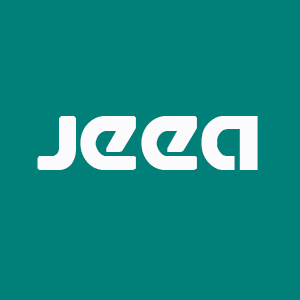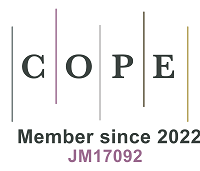REFERENCES
1. Federal Ministry of Food and Agriculture. National strategy for breastfeeding promotion. 2021 (in German). https://www.bmel.de/SharedDocs/Downloads/DE/Broschueren/nationale-stillstrategie.pdf. (accessed 2025-04-02).
2. World Health Organization. Breastfeeding. https://www.who.int/health-topics/breastfeeding#tab=tab_1. (accessed 2025-04-02).
3. Brettschneider, A. K.; von der Lippe, E.; Lange, C. [Breastfeeding behaviour in Germany-News from KiGGS Wave 2]. Bundesgesundheitsblatt. Gesundheitsforschung. Gesundheitsschutz. 2018, 61, 920-5.
4. Libuda, L.; Bolzenius, K.; Alexy, U. Breastfeeding trends in healthy infants since 1990-results of the DONALD study. Eur. J. Clin. Nutr. 2017, 71, 1016-8.
5. Federal Office of Consumer Protection and Food Safety. Heavy metals (in German). https://www.bvl.bund.de/DE/Arbeitsbereiche/01_Lebensmittel/02_UnerwuenschteStoffeOrganismen/07_Schwermetalle/lm_schwermetalle_node.html. (accessed 2025-04-02).
6. Mitchell, E. J.; Frisbie, S. H.; Roudeau, S.; Carmona, A.; Ortega, R. How much manganese is safe for infants? A review of the scientific basis of intake guidelines and regulations relevant to the manganese content of infant formulas. J. Trace. Elem. Med. Biol. 2021, 65, 126710.
7. Needleman, H. L.; Schell, A.; Bellinger, D.; Leviton, A.; Allred, E. N. The long-term effects of exposure to low doses of lead in childhood. An 11-year follow-up report. N. Engl. J. Med. 1990, 322, 83-8.
8. Nevin, R. How lead exposure relates to temporal changes in IQ, violent crime, and unwed pregnancy. Environ. Res. 2000, 83, 1-22.
9. French Agency for Food, Environmental and Occupational Health & Safety. Second French Total Diet Study (TDS 2). Report 1: inorganic contaminants, minerals, persistent organic pollutants, mycotoxins and phytoestrogens. 2011. https://www.anses.fr/en/system/files/PASER2006sa0361Ra1EN.pdf. (accessed 2025-04-02).
10. EFSA Panel on Dietetic Products, Nutrition and Allergies (NDA). Scientific Opinion on the essential composition of infant and follow-on formulae: essential composition of infant and follow-on formulae. EFSA. J. 2014, 12, 3760.
11. European Union. Regulation (EU) No 609/2013 of the European Parliament and of the Council of 12 June 2013 on food intended for infants and young children, food for special medical purposes, and total diet replacement for weight control and repealing Council Directive 92/52/EEC, Commission Directives 96/8/EC, 1999/21/EC, 2006/125/EC and 2006/141/EC, Directive 2009/39/EC of the European Parliament and of the Council and Commission Regulations (EC) No 41/2009 and (EC) No 953/2009 Text with EEA relevance. 2024. https://eur-lex.europa.eu/eli/reg/2013/609/oj. (accessed 2025-04-02).
12. Joint FAO/WHO Codex Alimentarius Commission, Food and Agriculture Organization of the United Nations, World Health Organization. General standard for contaminants and toxins in food and feed. CXS 193-1995. https://www.fao.org/fao-who-codexalimentarius/sh-proxy/fr/?lnk=1&url=https%253A%252F%252Fworkspace.fao.org%252Fsites%252Fcodex%252FStandards%252FCXS%2B193-1995%252FCXS_193e.pdf. (accessed 2025-04-02).
13. European Union. Commission Regulation (EU) 2023/915 of 25 April 2023 on maximum levels for certain contaminants in food and repealing Regulation (EC) No 1881/2006. https://eur-lex.europa.eu/eli/reg/2023/915/oj. (accessed 2025-04-02).
14. Jackson, B. P.; Taylor, V. F.; Punshon, T.; Cottingham, K. L. Arsenic concentration and speciation in infant formulas and first foods. Pure. Appl. Chem. 2012, 84, 215-23.
15. Sirot, V.; Traore, T.; Guérin, T.; et al. French infant total diet study: exposure to selected trace elements and associated health risks. Food. Chem. Toxicol. 2018, 120, 625-33.
16. Škrbić, B.; Živančev, J.; Jovanović, G.; Farre, M. Essential and toxic elements in commercial baby food on the Spanish and Serbian market. Food. Addit. Contam. Part. B. Surveill. 2017, 10, 27-38.
17. Souza, M. C. O.; Souza, J. M. O.; da Costa, B. R. B.; et al. Levels of organic pollutants and metals/metalloids in infant formula marketed in Brazil: risks to early-life health. Food. Res. Int. 2023, 174, 113594.
18. Carignan, C. C.; Karagas, M. R.; Punshon, T.; Gilbert-Diamond, D.; Cottingham, K. L. Contribution of breast milk and formula to arsenic exposure during the first year of life in a US prospective cohort. J. Expo. Sci. Environ. Epidemiol. 2016, 26, 452-7.
19. Banasiak, U.; Heseker, H.; Sieke, C.; Sommerfeld, C.; Vohmann, C. [Estimation of the dietary intake of pesticide residues based on new consumption data for children]. Bundesgesundheitsblatt. Gesundheitsforschung. Gesundheitsschutz. 2005, 48, 84-98.
20. German Federal Institute for Risk Assessment. EU maximum levels for cadmium in food for infants and young children sufficient - Exposure to lead should fundamentally be reduced to the achievable minimum. BfR Opinion No. 026/2018. 2018. https://www.bfr.bund.de/cm/349/eu-maximum-levels-for-cadmium-in-food-for-infants-and-young-children-sufficient.pdf. (accessed 2025-04-02).
21. Kolbaum, A. E.; Jung, C.; Jaeger, A.; Libuda, L.; Lindtner, O. Assessment of long-term dietary cadmium exposure in children in Germany: does consideration of data from total diet studies reduce uncertainties from food monitoring programmes? Food. Chem. Toxicol. 2024, 184, 114404.
22. Kolbaum, A. E.; Ptok, S.; Jung, C.; Libuda, L.; Lindtner, O. Reusability of Germany’s total diet study food list upon availability of new food consumption data-comparison of three update strategies. J. Expo. Sci. Environ. Epidemiol. 2023, 33, 794-804.
23. Nowak, N.; Diouf, F.; Golsong, N.; Höpfner, T.; Lindtner, O. KiESEL - the Children’s nutrition survey to record food consumption for the youngest in Germany. BMC. Nutr. 2022, 8, 64.
24. Hackethal, C.; Pabel, U.; Jung, C.; Schwerdtle, T.; Lindtner, O. Chronic dietary exposure to total arsenic, inorganic arsenic and water-soluble organic arsenic species based on results of the first German total diet study. Sci. Total. Environ. 2023, 859, 160261.
25. Sarvan, I.; Kolbaum, A. E.; Pabel, U.; Buhrke, T.; Greiner, M.; Lindtner, O. Exposure assessment of methylmercury in samples of the BfR MEAL Study. Food. Chem. Toxicol. 2021, 149, 112005.
26. Alharbi, N. S.; Akamsiei, R. M.; Almaiman, L. A.; et al. Occurrence and dietary exposure assessment of heavy metals in baby foods in the Kingdom of Saudi Arabia. Food. Sci. Nutr. 2023, 11, 5270-82.
27. Boon, P. E.; Pustjens, A. M.; Te Biesebeek, J. D.; Brust, G. M. H.; Castenmiller, J. J. M. Dietary intake and risk assessment of elements for 1- and 2-year-old children in the Netherlands. Food. Chem. Toxicol. 2022, 161, 112810.
28. Almeida, C. C.; Baião, D. D. S.; Rodrigues, P. A.; et al. Macrominerals and trace minerals in commercial infant formulas marketed in Brazil: compliance with established minimum and maximum requirements, label statements, and estimated daily intake. Front. Nutr. 2022, 9, 857698.
29. Ptok, S.; Sarvan, I.; Schendel, S.; et al. What’s in our food? BfR MEAL Study Final Report. 2023 (in German). http://www.bfr-meal-studie.de/cm/343/was-im-essen-steckt-abschlussbericht-bfr-meal-studie.pdf. (accessed 2025-04-02)
30. Raber, G.; Stock, N.; Hanel, P.; Murko, M.; Navratilova, J.; Francesconi, K. A. An improved HPLC-ICPMS method for determining inorganic arsenic in food: application to rice, wheat and tuna fish. Food. Chem. 2012, 134, 524-32.
31. EFSA Panel on Contaminants in the Food Chain (CONTAM). Scientific opinion on arsenic in food. EFSA. J. 2009, 7, 1351.
32. Fechner, C.; Hackethal, C.; Höpfner, T.; et al. Results of the BfR MEAL Study: in Germany, mercury is mostly contained in fish and seafood while cadmium, lead, and nickel are present in a broad spectrum of foods. Food. Chem. X. 2022, 14, 100326.
33. Arnich, N.; Sirot, V.; Rivière, G.; et al. Dietary exposure to trace elements and health risk assessment in the 2nd French Total Diet Study. Food. Chem. Toxicol. 2012, 50, 2432-49.
34. Federal Office of Consumer Protection and Food Safety. Archive of monitoring reports (in German). https://www.bvl.bund.de/DE/Arbeitsbereiche/01_Lebensmittel/01_Aufgaben/02_AmtlicheLebensmittelueberwachung/04_Monitoring/01_berichte_archiv/lm_monitoring_Berichte_Archiv_node.html. (accessed 2025-04-02).
35. Harms, H.; Wend, P. Article in chrom+food FORUM: The National Monitoring Program - Serving food safety and preventive consumer health protection in Germany for more than 20 years. 2016. https://www.bvl.bund.de/SharedDocs/Downloads/01_Lebensmittel/01_lm_mon_dokumente/harms_wend_national_monitoring_program.html. (accessed 2025-04-02)
36. Guérin, T.; Chekri, R.; Chafey, C.; Testu, C.; Hulin, M.; Noël, L. Mercury in foods from the first French total diet study on infants and toddlers. Food. Chem. 2018, 239, 920-5.
37. Schrenk, D.; Bignami, M.; Bodin, L.; et al; EFSA Panel on Contaminants in the Food Chain (CONTAM). Update of the risk assessment of inorganic arsenic in food. EFSA. J.2024, 22, e8488.
38. Astolfi, M. L.; Marotta, D.; Cammalleri, V.; et al. Determination of 40 elements in powdered infant formulas and related risk assessment. Int. J. Environ. Res. Public. Health. 2021, 18, 5073.
39. Başaran, B. An assessment of heavy metal level in infant formula on the market in Turkey and the hazard index. J. Food. Compos. Anal. 2022, 105, 104258.
40. Jean, J.; Sirot, V.; Hulin, M.; et al. Dietary exposure to cadmium and health risk assessment in children - results of the French infant total diet study. Food. Chem. Toxicol. 2018, 115, 358-64.
41. Su, C.; Zheng, N.; Gao, Y.; et al. Content and dietary exposure assessment of toxic elements in infant formulas from the Chinese market. Foods 2020, 9, 1839.
42. European Food Safety Authority. Cadmium dietary exposure in the European population: cadmium dietary exposure in Europe. EFSA. J. 2012, 10, 2551.
43. EFSA Panel on Contaminants in the Food Chain (CONTAM). Scientific Opinion on the risks to public health related to the presence of chromium in food and drinking water. EFSA. J. 2014, 12, 3595.
44. Schrenk D, Bignami M, Bodin L, et al; EFSA Panel on Contaminants in the Food Chain (CONTAM). Update of the risk assessment of nickel in food and drinking water. EFSA. J.2020, 18, e06268.
45. Joint FAO/WHO Codex Alimentarius Commission, Food and Agriculture Organization of the United Nations, World Health Organization. Standard for infant formula and formulas for special medical purposes intended for infants. CXS 72-1981. https://www.fao.org/fao-who-codexalimentarius/sh-proxy/es/?lnk=1&url=https%253A%252F%252Fworkspace.fao.org%252Fsites%252Fcodex%252FStandards%252FCXS%2B72-1981%252FCXS_072e.pdf. (accessed 2025-04-02).
46. Joint FAO/WHO Codex Alimentarius Commission, Food and Agriculture Organization of the United Nations, World Health Organization. Standard for follow-up formula for older infants and product for young children. CXS 156-1987. https://www.fao.org/fao-who-codexalimentarius/sh-proxy/es/?lnk=1&url=https%253A%252F%252Fworkspace.fao.org%252Fsites%252Fcodex%252FStandards%252FCXS%2B156-1987%252FCXS_156e.pdf. (accessed 2025-04-02).
47. Lin, X.; Wu, X.; Li, X.; et al. Infant exposure to trace elements in breast milk, infant formulas and complementary foods from southern China. Sci. Total. Environ. 2022, 838, 156597.
48. Verkaik-Kloosterman, J.; Beukers, M. H.; Jansen-van der Vliet, M.; Ocké, M. C. Vitamin D intake of Dutch infants from the combination of (fortified) foods, infant formula, and dietary supplements. Eur. J. Nutr. 2017, 56, 581-90.
49. European Commission, Scientific Committee on Food. Opinion of the Scientific Committee on food on the tolerable upper intake level of trivalent chromium. 2003. https://ec.europa.eu/food/fs/sc/scf/out197_en.pdf. (accessed 2025-04-02).
50. EFSA Panel on Nutrition, Novel Foods and Food Allergens (NDA); Turck D, Bohn T, Castenmiller J, et al. Scientific opinion on the tolerable upper intake level for manganese. EFSA. J.2023, 21, e8413.
51. EFSA Panel on Contaminants in the Food Chain (CONTAM). Scientific Opinion on the risk for public health related to the presence of mercury and methylmercury in food. EFSA. J. 2012, 10, 2985.
52. EFSA Panel on Nutrition, Novel Foods and Food Allergens (NDA); Turck D, Bohn T, Castenmiller J, et al. Scientific opinion on the tolerable upper intake level for selenium. EFSA. J.2023, 21, e07704.
53. European Commission, Scientific Committee on Food. Opinion of the Scientific Committee on food on the tolerable upper intake level of zinc. 2002. https://ec.europa.eu/food/fs/sc/scf/out177_en.pdf. (accessed 2025-04-02).
54. EFSA Panel on Contaminants in the Food Chain (CONTAM). Scientific Opinion on Lead in Food. EFSA. J. 2010, 8, 1570.
55. Rose, M.; Baxter, M.; Brereton, N.; Baskaran, C. Dietary exposure to metals and other elements in the 2006 UK Total Diet Study and some trends over the last 30 years. Food. Addit. Contam. Part. A. Chem. Anal. Control. Expo. Risk. Assess. 2010, 27, 1380-404.
56. Perelló, G.; Vicente, E.; Castell, V.; Llobet, J. M.; Nadal, M.; Domingo, J. L. Dietary intake of trace elements by the population of Catalonia (Spain): results from a total diet study. Food. Addit. Contam. Part. A. Chem. Anal. Control. Expo. Risk. Assess. 2015, 32, 748-55.
57. Cubadda, F.; Iacoponi, F.; Ferraris, F.; et al. Dietary exposure of the Italian population to nickel: the national total diet study. Food. Chem. Toxicol. 2020, 146, 111813.
58. European Food Safety Authority. Lead dietary exposure in the European population. EFSA. J. 2012, 10, 2831.
59. EFSA Panel on Dietetic Products, Nutrition and Allergies (NDA). Scientific opinion on dietary reference values for zinc: dietary reference values for zinc. EFSA. J. 2014, 12, 3844.
60. New Zealand Food Safety. 2016 New Zealand Total Diet Study. https://www.mpi.govt.nz/dmsdocument/43177-2016-NZ-Total-Diet-Study-with-Appendices-report-. (accessed 2025-04-02)







